Slow Fashion Show 2020 By Czech Center Stockholm
April 19th, 2020 | 6 minutes to read
I was happy to attend Slow Fashion Show hosted by Czech Center in Stockholm a while ago. It was amazing that young designers nowadays started to think differently. They explored the possibility of personal connection with our clothes, innovative use of materials and how to leave less impact on the planet during production. Here is a little conversation with them.
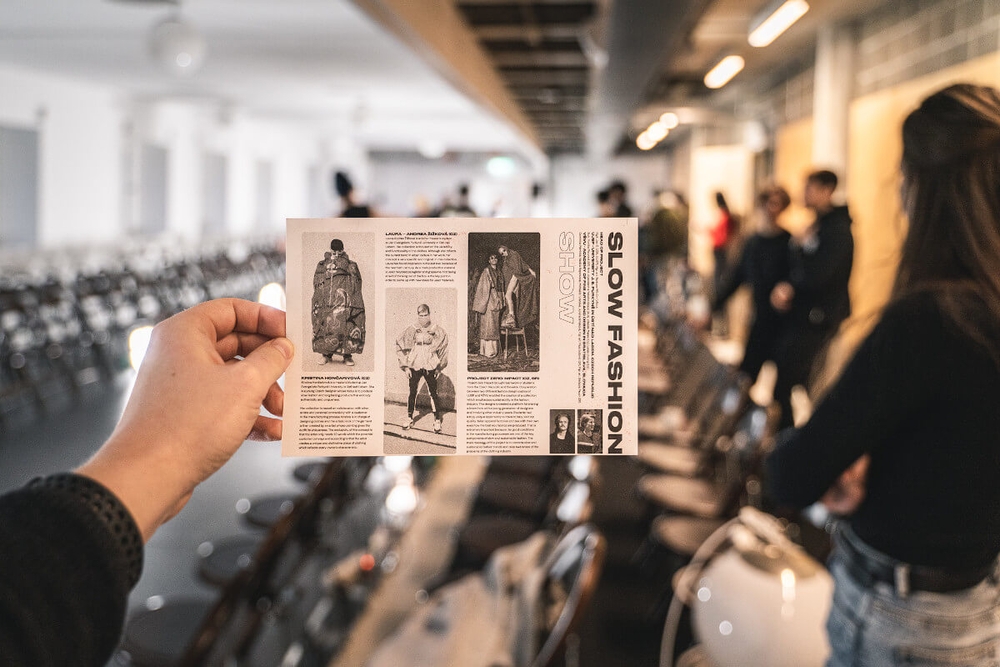
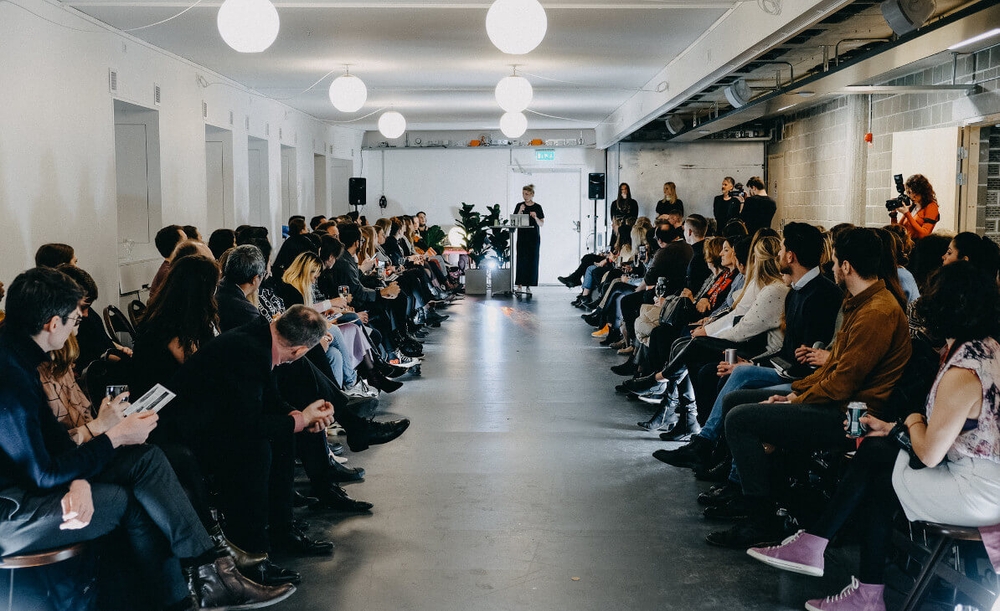
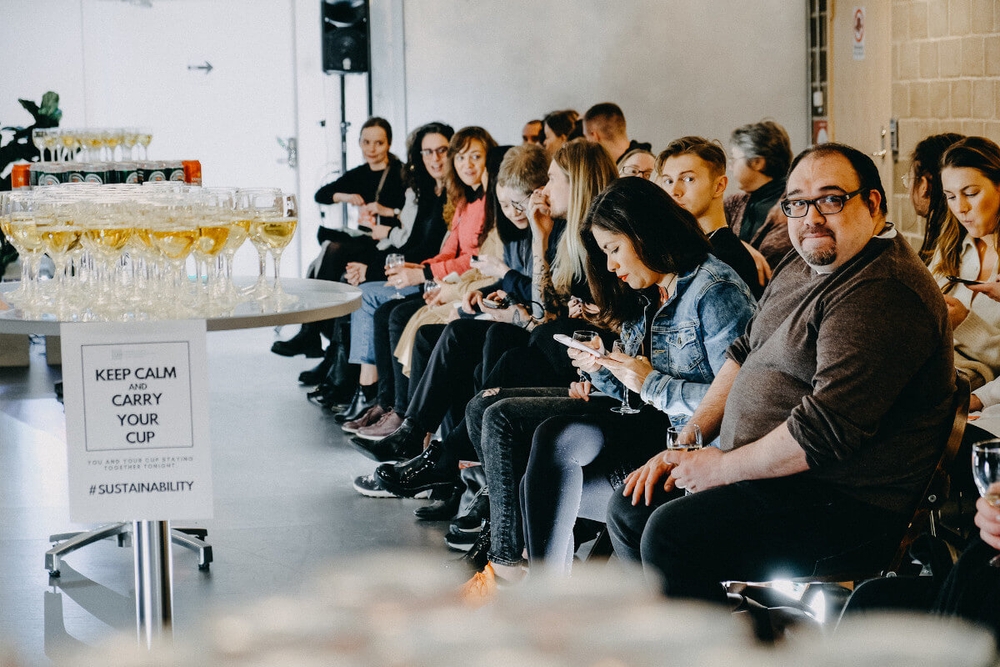
10 Words - Kristina Honcarivová
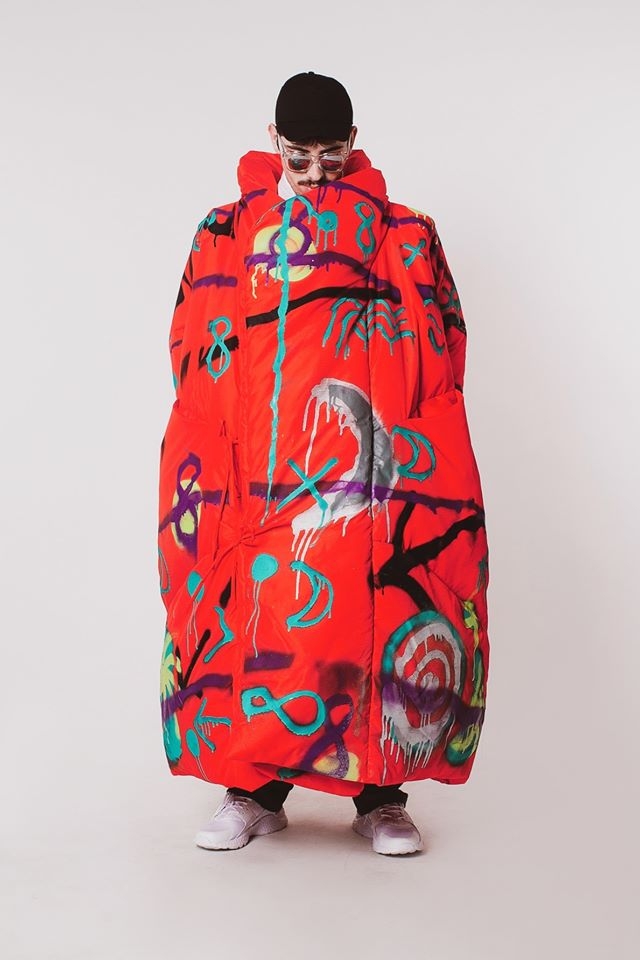
Annie: Your collection focuses on uniqueness of the piece and you also collaborated with other artists, why do you choose "personal connection" as the key concept of your design?
Kristina: The collection 10 WORDS is indeed a very personal project. Not only for me as a designer but also for the models and the painters as well. We have created a multidisciplinary project where I design and sew clothes and the painters liven up the artwork using the colors and their imagination. I am grateful for having met many incredible people who participated on this project, namely the painters Kateřina Brandejsová, Yana Korzhova, Ilja Bazhanov and Jakub Hýnar and also many interesting models.
The models describe themselves in ten words. After that the painters interpret those ten words in the painting on their clothes and the walls. This creates a unique social artwork because everybody participates by creating their own part and that is exactly the moment when the artwork becomes whole. When the model with the painted clothes walks away from the spot in front of the wall, it leaves us the blank space in the painting which reminds us of the missing human element.
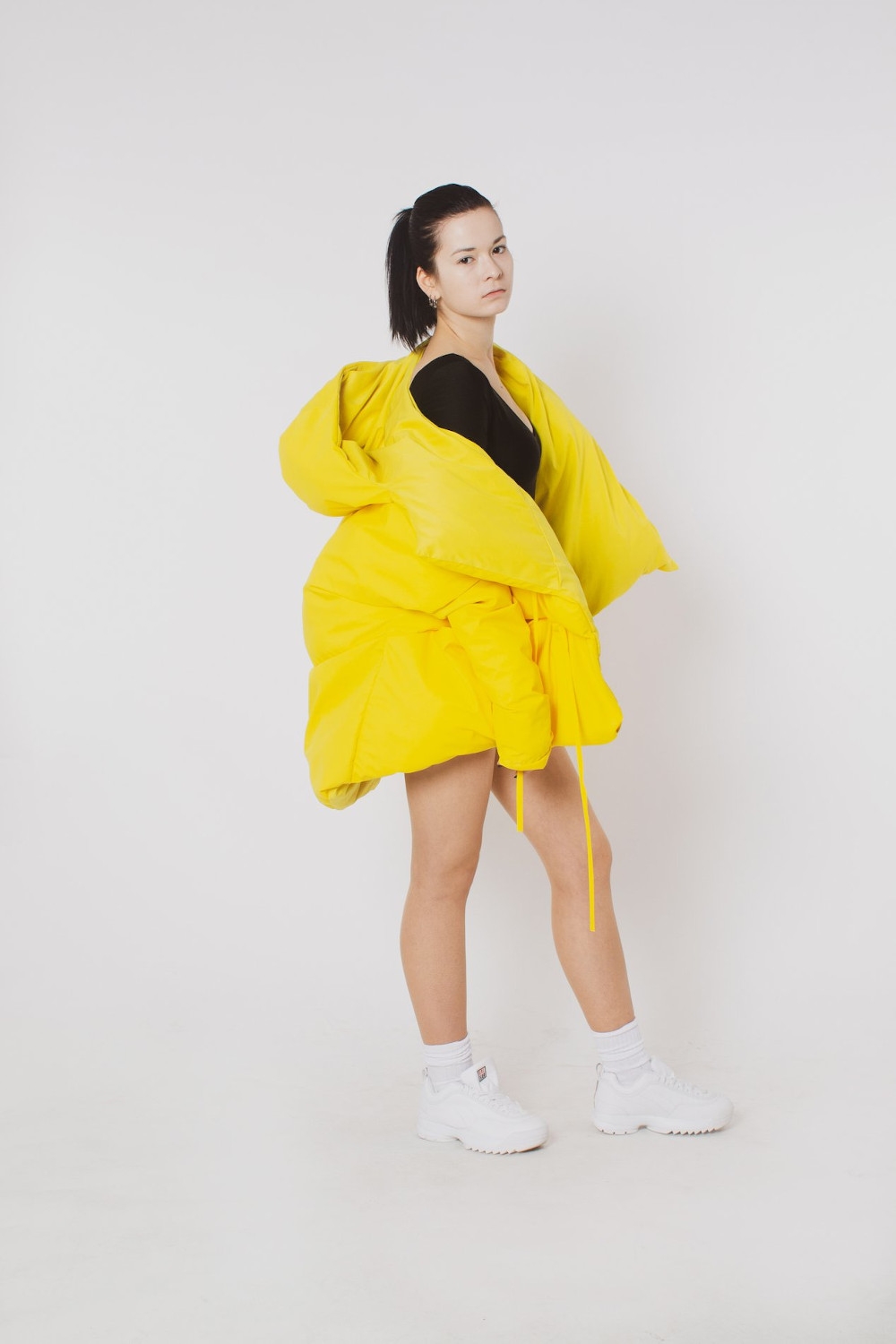
Annie: Which materials do you prefer to use and how long does it take to finish one piece of work?
Kristina: I don't have any favorite material. I understand that each material has its own advantages and disadvantages. Therefore, it is only important to be aware of the possibilities and to make the right choice for each piece. And regarding the time spent with a each piece? 10 words is a wide range collection composed of pants, sweatshirts, jackets etc, so it depends on the difficulty of each individual piece. Some of the pieces can be done in a few hours, while some others could require a week of daily work.
Annie: How do you envision the business model of your design?
Kristina: I have no idea. I am better designer than businessman.
WINDBREAKERS - Laura – Andrea Zizková
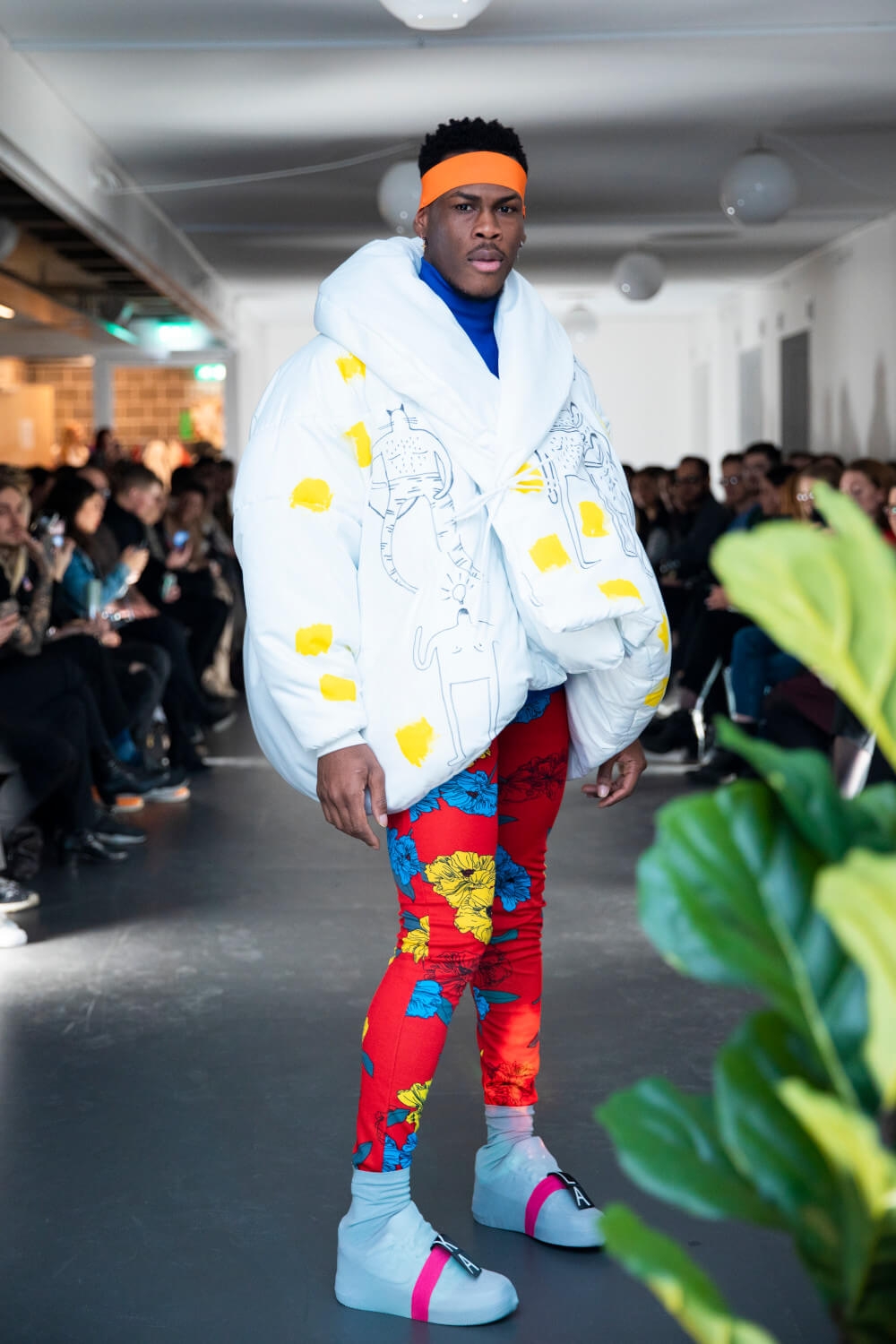
Annie: I see that you use recycled paraglider and grapevine as the main materials, have you found the materials first then think of the design, or vice versa?
Laura – Andrea: The idea of the collection Windbreakers descends from paragliding. First, I chose the material, which I wanted to work on and later I decided on the shape. That was probably the most difficult part of this collection. I wanted to keep the principle of the air pockets of the paragliding wing in conjunction with streetwear fashion. The garments are not designed to determine the gender of their wearer, in other words, they belong to the unisex fashion. This is also reflected in the size of the jackets themselves. Thanks to the use of thin and light material, it is possible to adapt excessive editing solutions, which can be adapted to the volume of the human figure by the principle of tightening. Oversize size also indicates the nature of the material, which can be moved by the wind and create air pockets. Greater air permeability to the garment thus supports the idea of the entire collection.
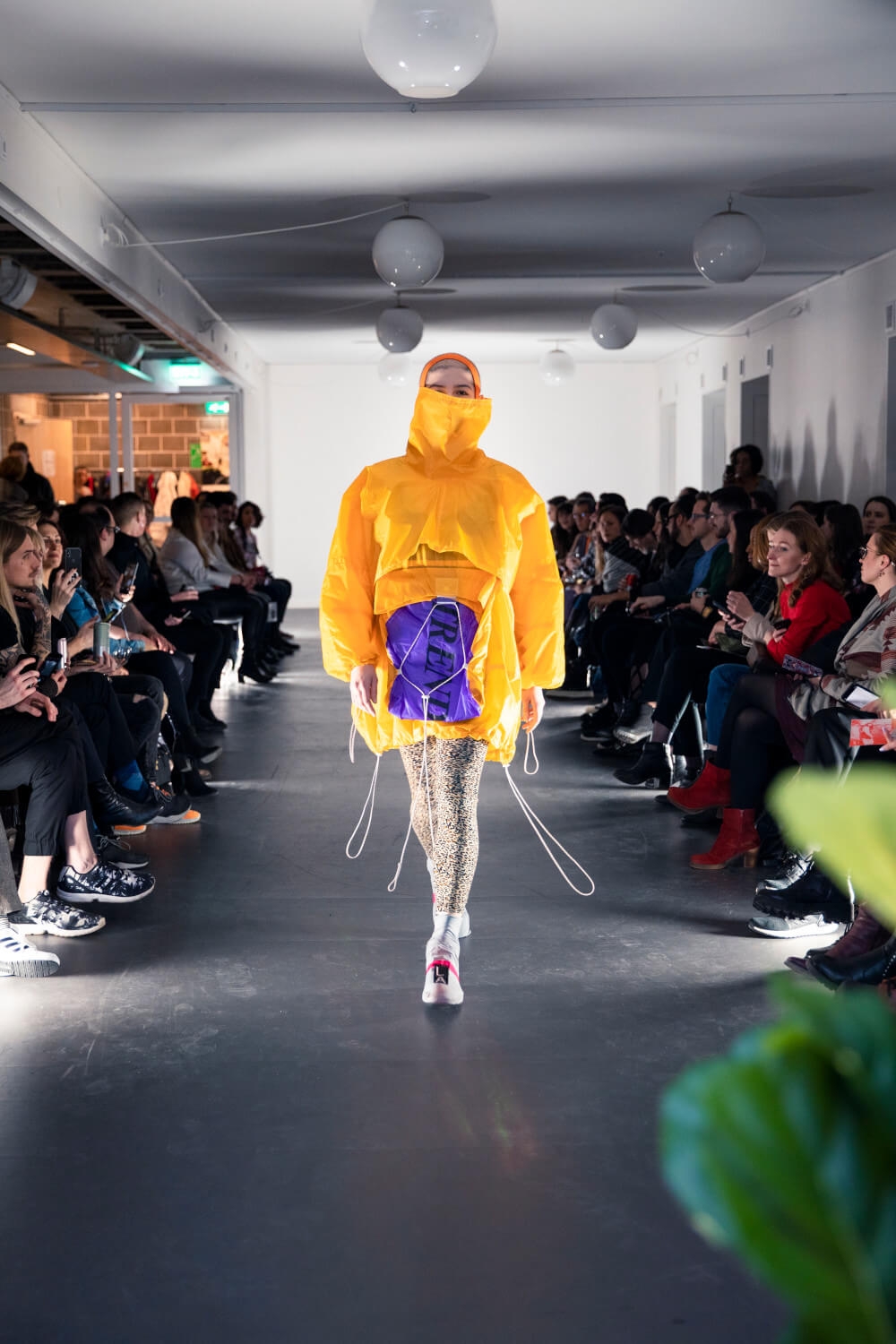
Annie: Which things inspired you about those design? Is there a story behind it?
Laura – Andrea: The collection is my bachelor's work in the faculty of Art and Design in Ústí nad Labem. The first impulse for creating this collection has become elements that I used in my works before. They are characteristics of my creation. I often use technical materials and fabrics with characters such as transparency, strength, and lightness with a focus on streetwear fashion. I started to use up-cycling of paragliding material because of ripstop fabric used for parachutes. I applied this material often in my collections before, regardless of the original use.
In this work, I focused on the history of the material and the primary exploitation. I use air sports such as parachuting paragliding etc as references. First I tried to call small airports suppliers, to see if they have some unused or discarded parachute, unfortunately it was without success. Then the problem was solved thanks to a friend from school because he had old paragliding equipment at home, which was not possible to use anymore. The wing is from the 80s, which is revealed from the color's combination. I tried to process that time in my design and sustain the origin of this specific piece.
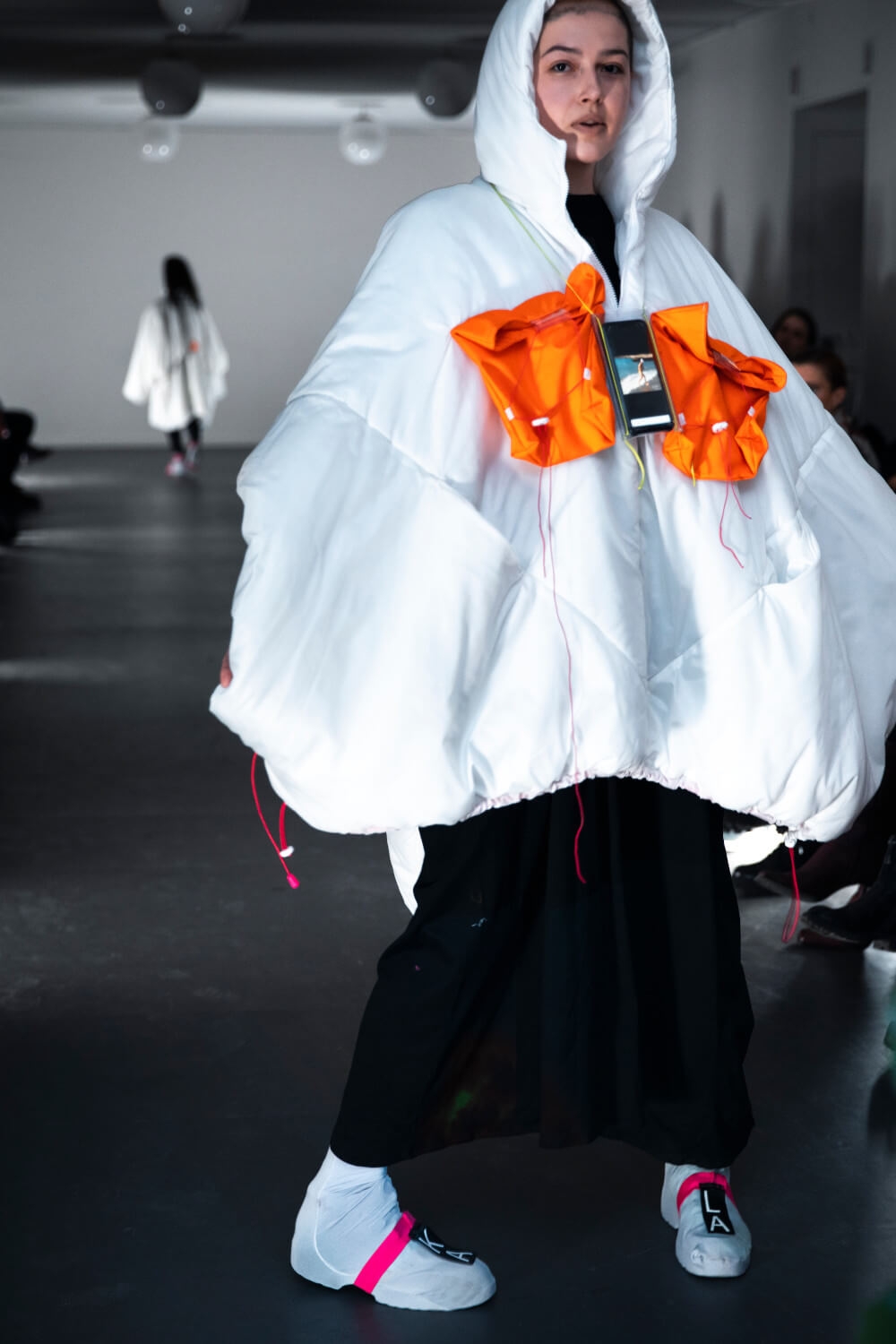
Annie: When you made those design, do you have general public in mind or a specific group of people? Who will wear those clothes?
Laura – Andrea: As I mentioned before, the collection is designed for city streets. I think, thanks to oversize cuts and different shapes and color combinations, this collection is for everyone who wants to get out of the gray city.
Annie: Anything more you want to add about parachutes?
Laura – Andrea: It is possible to recycle these windbreakers all like they are. Because all fabrics and components are only made from synthetic material, not a combination with some other types of materials.
Project Zero Impact - AOTD, University of Jan Evangelista Purkyne, Academy of Fine Arts and Design, Studio 343
AOTD - Bao Long Duong, Zdeněk Marek , Monika Pizur, Al Yakubouskaya University of Jan Evangelista Purkyně - Faculty of Art and Design Studio of Fashion and Textile Design (Czechia) Academy of Fine Arts and Design - Department of Textiles (Slovakia) Studio 343 - Juliána Brnáková, Dominika Párnická, Natália Repkovská, Michaela Turanská, Barbora Peuch, Maja Božovič
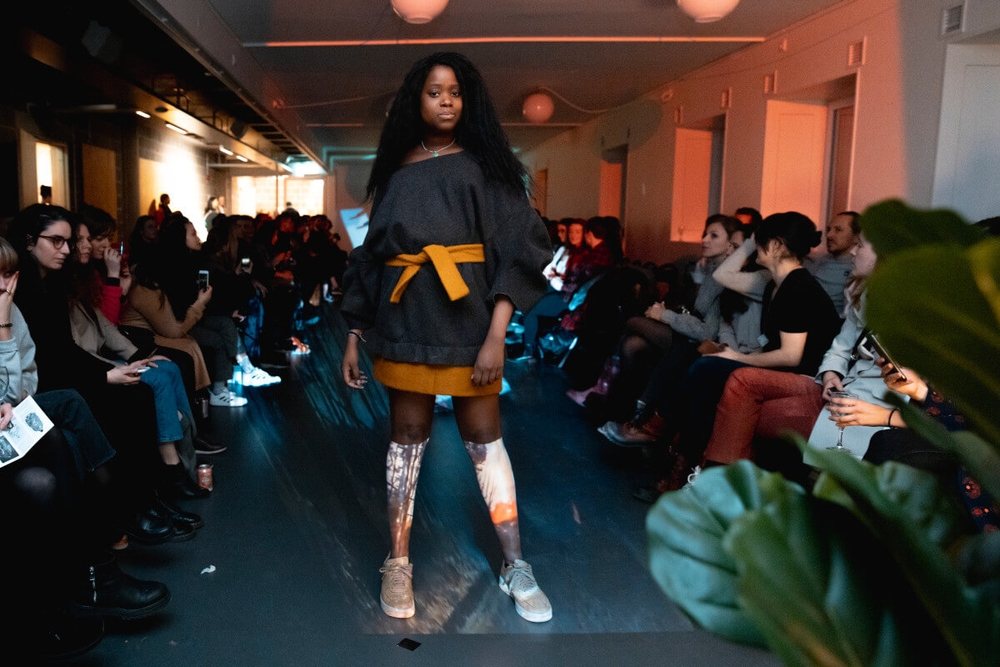
Annie: Many of us realize there is a lot of problems in the fashion industry, how is your collection different?
Project Zero Impact: The project Zero impact was designed and made by 10 designers with the objective of creating a sustainable collection. The whole collaboration between many institutions was started by the magazine entitled WEARME FASHION and the wonderful Věra Artemyeva. The materials were provided by several Italian factories such as Organic cotton colours, Botto Giuseppe, Trendytex. These materials were produced in different ways e.g. Organic cotton colours produce their fabric by planting the cotton into different soils so steps polluting water would be eliminated, Botto Giuseppe is certified by The Woolmark company etc.
The collaboration is the key to our project, we designed to minimize the impact on the planet and each designer had a specific way of doing so. The materials provided were used entirely and the waste was recycled. Therefore the design process overlooked the whole life of the garment, meaning that if damaged patterns and parts are easily replaced and in the final step the garment could be totally recycled. When it could be done we sew with cotton threads and plastic or metal components could be easily removed. The collections are conceptually thought through. Proceeding from two main themes “Path” (CZ) and “Expedition” (SK) each of the designers approached this topic authentically and in their own way. The goal was to create a collection which would be coherent.
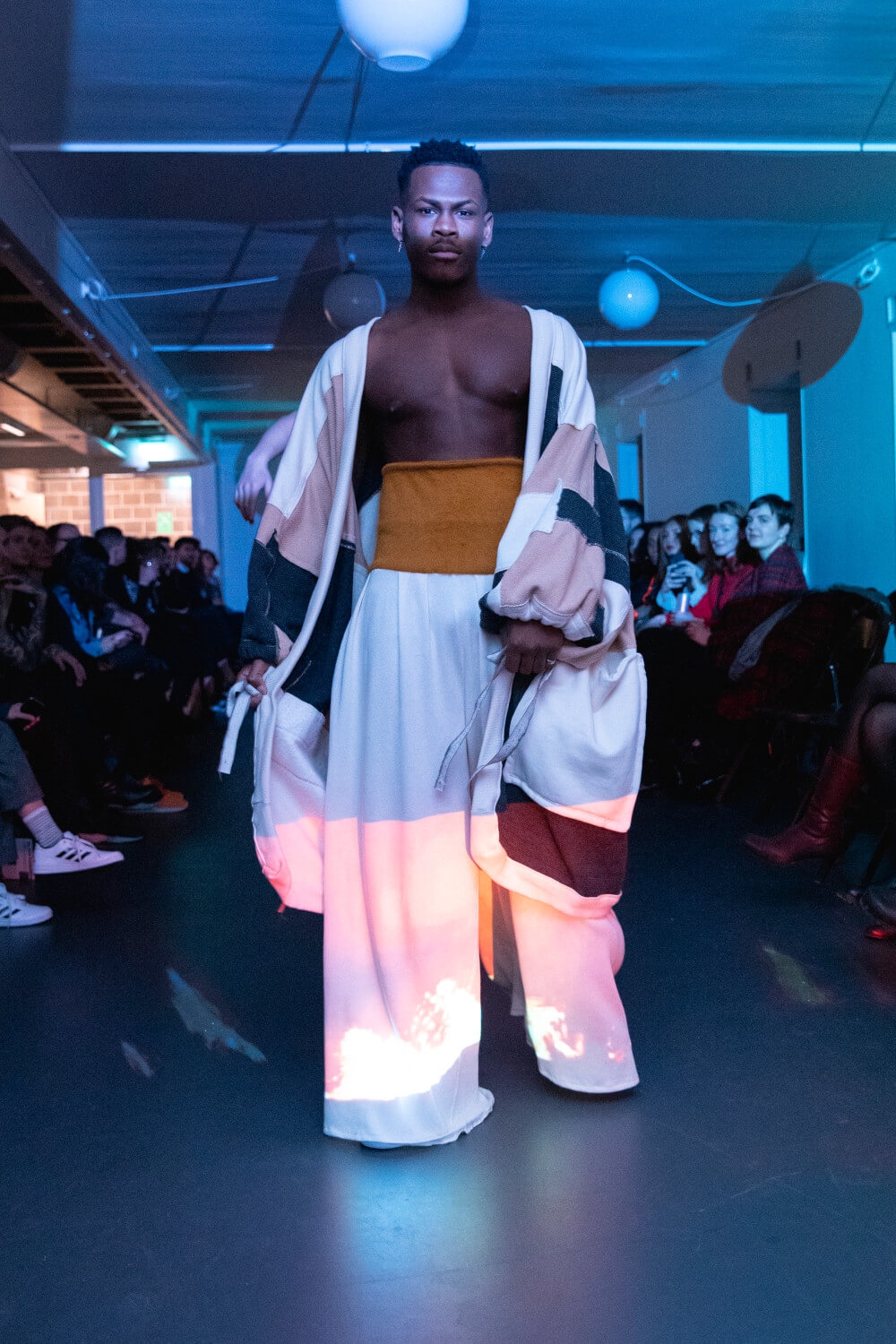
Annie: What does the process look like during your collaboration, and what challenges have you overcome?
Project Zero Impact: As mentioned, the collaboration started with WEARME FASHION and Věra Artemyeva and the idea for this project was her brainchild. She contacted Mgr. art. Barbora Peuch, ArtD. who then spoke to MgA. Jan C. Löbl. From then on 8 students were chosen to work on the project. We visited each other many times and got acquainted swiftly. During these visits we would talk about our visions for the project and set the rules so that the collection would be consistent. Obviously in the beginning there was the sentiment of us and them, but over time we found a common language so to speak.
One of the highlights of the project was that the students and studio leaders were able to visit the factories in northern Italy and see with their own eyes the process of production, which was so enriching as some of us were a little afraid of cutting the fabric, but in all means the visits were eye-opening experiences.
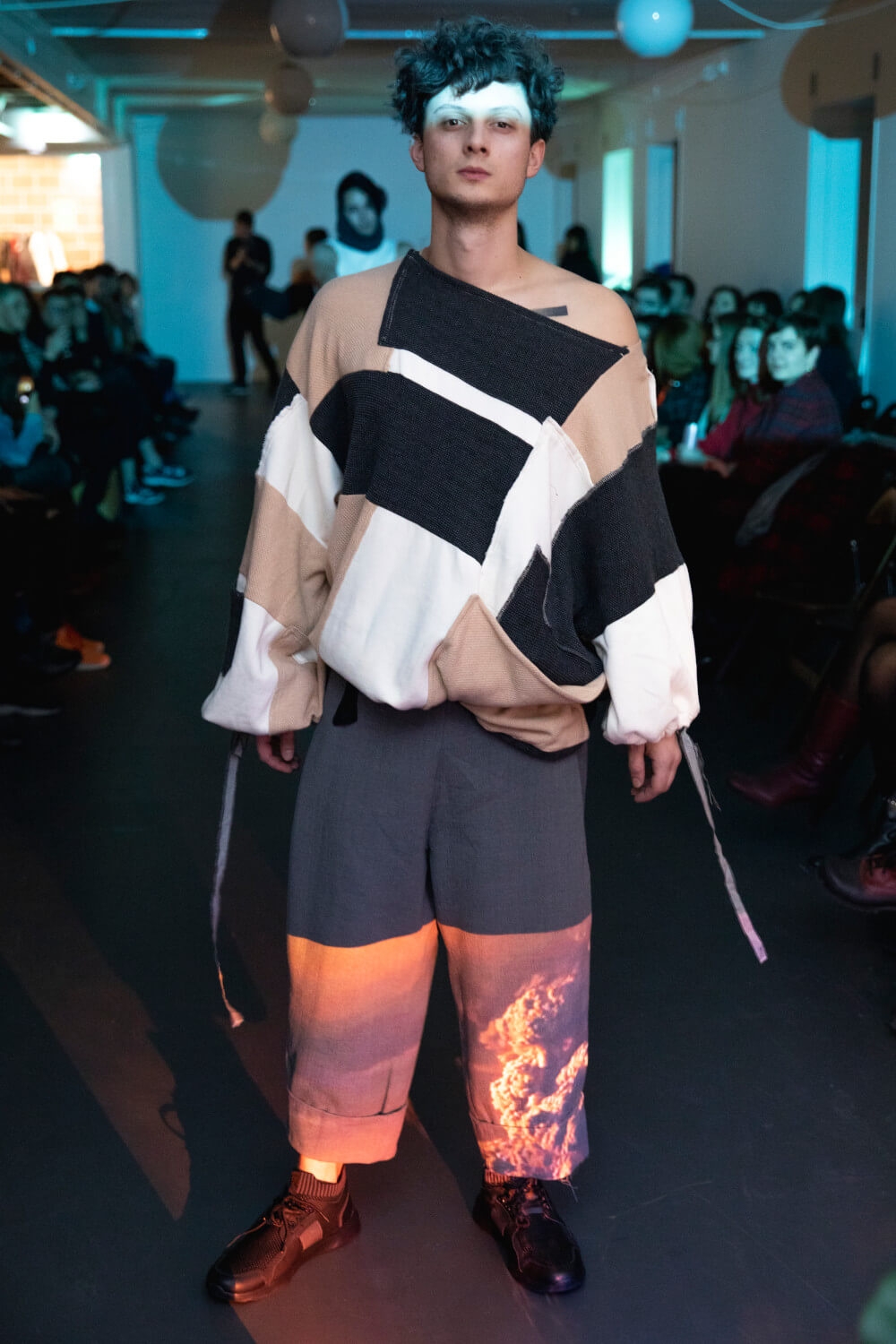
Annie: Do you plan to apply the new techniques, concepts or principles you've learnt about slow fashion to your future design?
Project Zero Impact: The whole process of the Zero impact project was unique and the experiences we gained are not to be forgotten. Every single one of the students has their own identity to find, but the principles learned cannot be easily omitted. At the end of the day the fashion industry is the second most polluting industry in the world and so we as future designers have the responsibility to think and design sustainable clothing as much as possible.
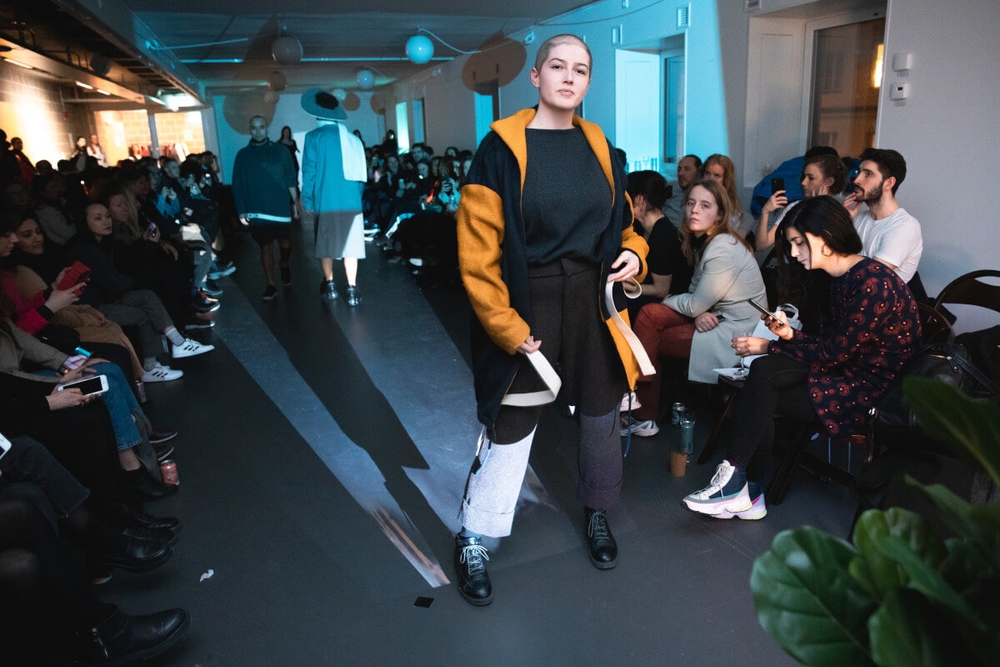
Annie: That's good to hear. Anything more you would like to add?
Project Zero Impact: We think that it is important to mention that the project is in may ways unique. It is not usual for two institutions to collaborate on a project, as in the fashion world the competition is omnipresent. We are grateful to have had the opportunities to show our designs on multiple different occasions such as Fashion idea festival in Minsk, Košice Fashionweek, Bratislava Fashion Live!, The night of scientists (with the theme of sustainability) in Ústí nad Labem, Designblok 2019 in Prague and Slow Fashion Show in Stockholm. This means that the public is starting to realise that the problems of the fashion industry are not to be ignored and the change begins within one’s self. That for us is a big step in the right direction.
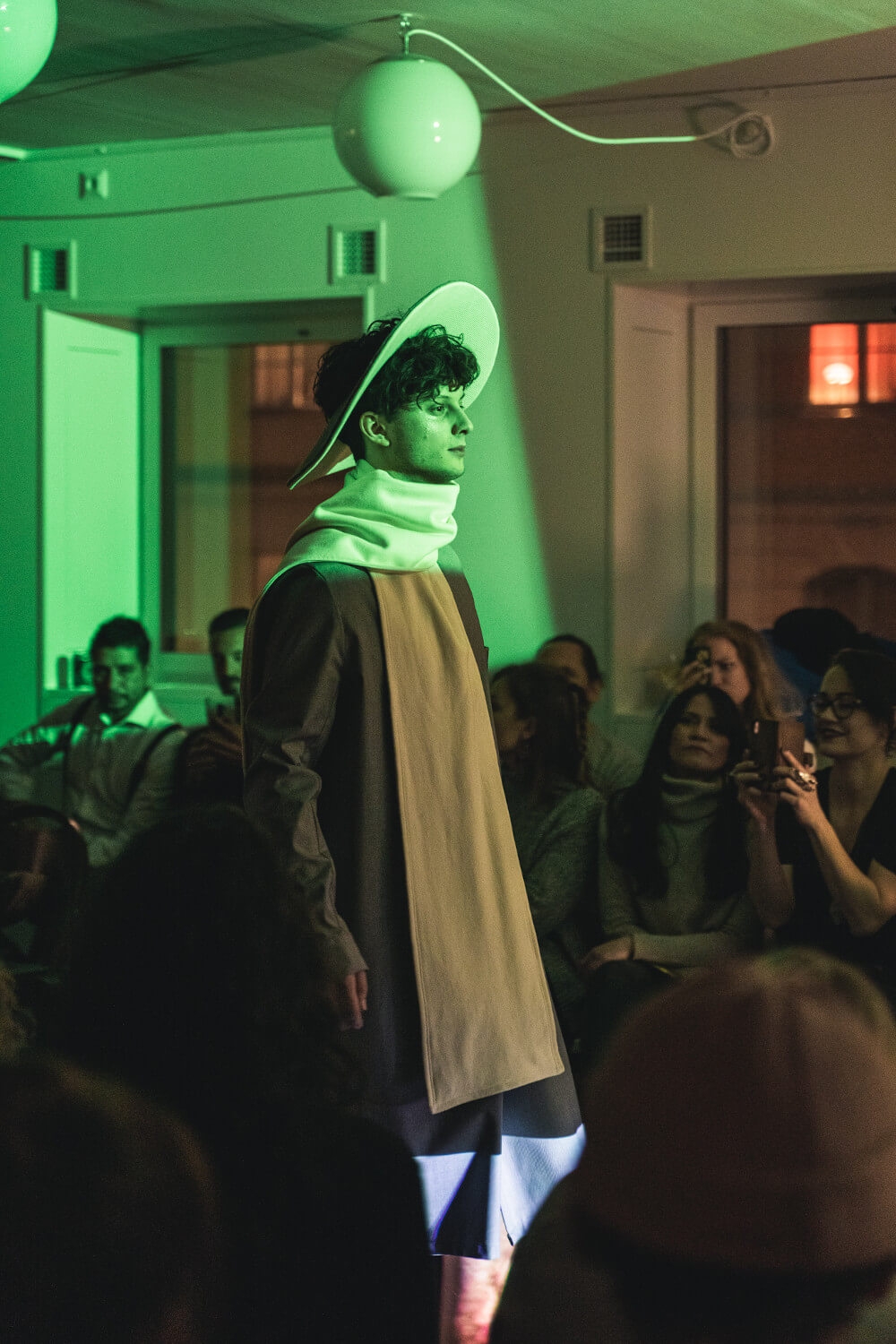
Thank you all!
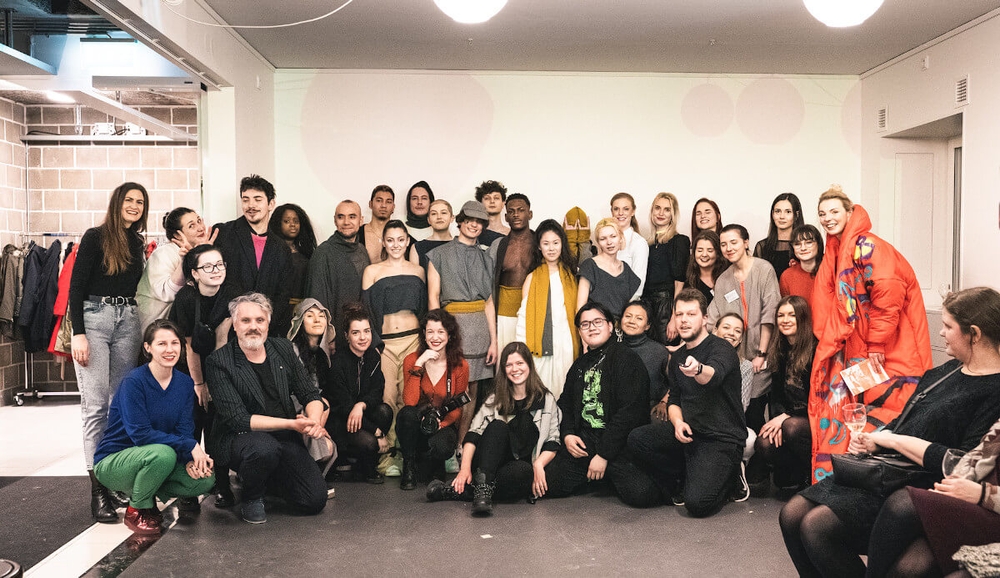
All the pictures courtesy of Czech Center Stockholm.